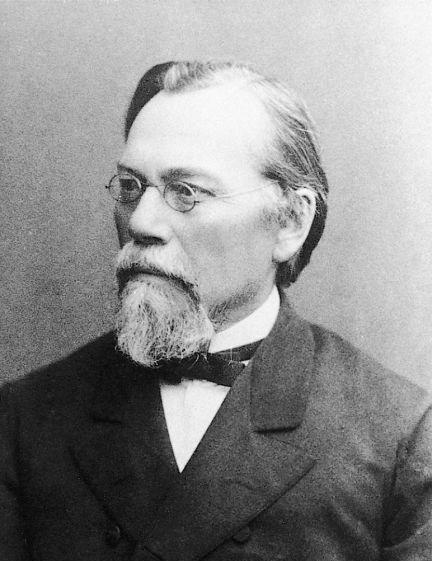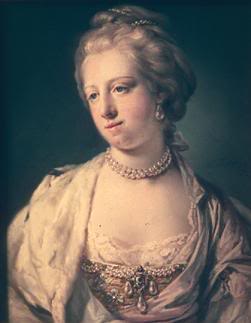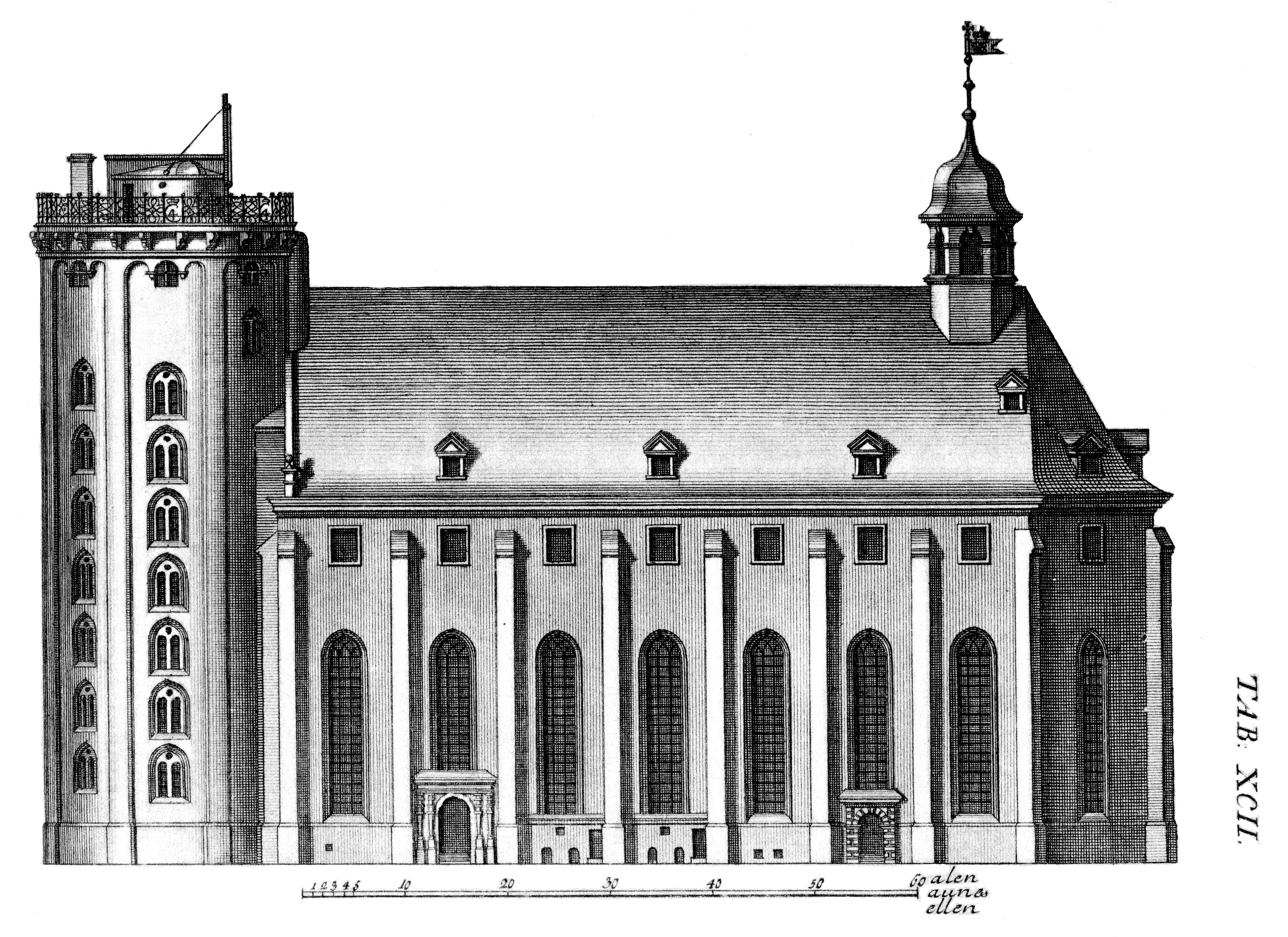|
Vilhelm Tvede
Frederik Vilhelm Tvede (13 May 1826 – 27 November 1891) was a Danish architect. Biography Tvede was born in the parish of Trinitatis Church, Trinitatis in Copenhagen, Denmark. He was the son of Johan Frederik Tvede and Christine f. Norup. He was a student of Gustav Friedrich Hetsch at the Royal Danish Academy of Fine Arts. He was employed as a drawing teacher at the Technical Institute (''Teknologisk Institut'') and worked for Det Classenske Fideicommis. His son, Gotfred Tvede was also an architect associated with Det Classenske Fideicommis. Among other projects, Tvede led the restoration of the Church of Our Lady, Kalundborg, Church of Our Lady (''Vor Frue Kirke'') at Kalundborg (1867-1871) as well as Goose Tower (''Gåsetårnet'') at Vordingborg Castle (1871). He designed Humlebæk, Humlebæk Church (1868) and Vedbæk, Vedbæk Church (1870-1871). He was also responsible for the first architect-designed fisherman's cottage in Denmark in the village of Hesnæs; the ... [...More Info...] [...Related Items...] OR: [Wikipedia] [Google] [Baidu] |
Hesnæs
Hesnæs is a little fishing village located southeast of Stubbekøbing on the Danish island of Falster. Its distance from Copenhagen is 125.4 km. It is best known for its thatched, straw-clad houses, not found elsewhere in Denmark. History The first documented reference to Hesnæs (then ''Hesnes'') dates from 1551 when it is mentioned as a fishing village. In 1585, the Crown acquired Hesnæs from Peter Gyldenstjerne of Bønnet. It had 11 fishing huts and five net-making stalls. In 1771, it was bought by Johan Frederik Classen of Corselitze, founder of Det Classenske Fideicommis."Hesnæs" ''Historisk Atlas''. Retrieved 21 November 2012. In 1801, Hesnæs was a small fishing community consisting of 18 families in clay-plastered, w ... [...More Info...] [...Related Items...] OR: [Wikipedia] [Google] [Baidu] |
19th-century Danish Architects
The 19th century began on 1 January 1801 (represented by the Roman numerals MDCCCI), and ended on 31 December 1900 (MCM). It was the 9th century of the 2nd millennium. It was characterized by vast social upheaval. Slavery was abolished in much of Europe and the Americas. The First Industrial Revolution, though it began in the late 18th century, expanded beyond its British homeland for the first time during the 19th century, particularly remaking the economies and societies of the Low Countries, France, the Rhineland, Northern Italy, and the Northeastern United States. A few decades later, the Second Industrial Revolution led to ever more massive urbanization and much higher levels of productivity, profit, and prosperity, a pattern that continued into the 20th century. The Catholic Church, in response to the growing influence and power of modernism, secularism and materialism, formed the First Vatican Council in the late 19th century to deal with such problems and confirm ce ... [...More Info...] [...Related Items...] OR: [Wikipedia] [Google] [Baidu] |
Royal Danish Academy Of Fine Arts Alumni
Royal may refer to: People * Royal (name), a list of people with either the surname or given name * A member of a royal family or royalty Places United States * Royal, Arkansas, an unincorporated community * Royal, Illinois, a village * Royal, Iowa, a city * Royal, Missouri, an unincorporated community * Royal, Nebraska, a village * Royal, Franklin County, North Carolina, an unincorporated area * Royal, Utah, a ghost town * Royal, West Virginia, an unincorporated community * Royal Gorge, on the Arkansas River in Colorado * Royal Township (other) Elsewhere * Mount Royal, a hill in Montreal, Canada * Royal Canal, Dublin, Ireland * Royal National Park, New South Wales, Australia Arts, entertainment, and media * ''Royal'' (Jesse Royal album), 2021 * Royal (Ayo album), 2020 * ''The Royal'', a British medical drama television series * '' The Royal Magazine'', a monthly British literary magazine published between 1898 and 1939 * '' The Raja Saab'', working title ''Roy ... [...More Info...] [...Related Items...] OR: [Wikipedia] [Google] [Baidu] |
Architects From Copenhagen
An architect is a person who plans, designs, and oversees the construction of buildings. To practice architecture means to provide services in connection with the design of buildings and the space within the site surrounding the buildings that have human occupancy or use as their principal purpose. Etymologically, the term architect derives from the Latin , which derives from the Greek (''-'', chief + , builder), i.e., chief builder. The professional requirements for architects vary from location to location. An architect's decisions affect public safety, and thus the architect must undergo specialised training consisting of advanced education and a ''practicum'' (or internship) for practical experience to earn a Occupational licensing, license to practice architecture. Practical, technical, and academic requirements for becoming an architect vary by jurisdiction though the formal study of architecture in academic institutions has played a pivotal role in the development of the p ... [...More Info...] [...Related Items...] OR: [Wikipedia] [Google] [Baidu] |
1891 Deaths
Events January * January 1 ** A strike of 500 Hungarian steel workers occurs; 3,000 men are out of work as a consequence. **Germany takes formal possession of its new African territories. * January 4 – The Earl of Zetland issues a declaration regarding the famine in the western counties of Ireland. * January 5 **The Australian shearers' strike, that leads indirectly to the foundation of the Australian Labor Party, begins. **A fight between the United States and Lakotas breaks out near Pine Ridge agency. **A fight between railway strikers and police breaks out at Motherwell, Scotland. * January 7 ** General Miles' forces surround the Lakota in the Pine Ridge Reservation. ** The Inter-American Monetary Commission meets in Washington DC. * January 9 – The great shoe strike in Rochester, New York is called off. * January 10 – in France, the Irish Nationalist leaders hold a conference at Boulogne. The French government promptly takes loan. * J ... [...More Info...] [...Related Items...] OR: [Wikipedia] [Google] [Baidu] |
1826 Births
Events January–March * January 15 – The French newspaper ''Le Figaro'' begins publication in Paris, initially as a satirical weekly. * January 17 – The Ballantyne printing business in Edinburgh (Scotland) crashes, ruining novelist Sir Walter Scott as a principal investor. He undertakes to repay his creditors from his writings. His publisher, Archibald Constable, also fails. * January 18 – In India, the Siege of Bharatpur ends in British victory as Lord Combermere and Michael Childers defeat the princely state of Bharatpur, now part of the Indian state of Rajasthan. * January 30 – The Menai Suspension Bridge, built by engineer Thomas Telford as the first major suspension bridge in world history, is opened between the island of Anglesey and the mainland of Wales. * February 6 – James Fenimore Cooper's novel ''The Last of the Mohicans'' is first printed, by a publisher in Philadelphia. * February 8 – Unitarian Bernardino Rivadavia becomes the first Pr ... [...More Info...] [...Related Items...] OR: [Wikipedia] [Google] [Baidu] |
Den Store Danske Encyklopædi
''Den Store Danske Encyklopædi'' () is the most comprehensive contemporary Danish language encyclopedia. The 20 volumes of the encyclopedia were published successively between 1994 and 2001; a one-volume supplement was published in 2002 and two index volumes in 2003. The work comprises 115,000 articles, ranging in size from single-line cross references to the 130-page entry on Denmark. The articles were written by a staff of about 4,000 academic experts led by editor-in-chief Jørn Lund. Articles longer than a few dozen lines are signed by their authors. Many articles are illustrated. The encyclopedia was published by ''Danmarks Nationalleksikon A/S'' (Denmark's National Encyclopedia), a subsidiary of Denmark's publishing house Gyldendal that was set up for the purpose. The project was inspired by the almost contemporary Swedish ''Nationalencyklopedin''; it received financial support from the Augustinus Foundation and was backed by a governmental inflation guarantee on pre-pa ... [...More Info...] [...Related Items...] OR: [Wikipedia] [Google] [Baidu] |
Assistens Cemetery (Copenhagen)
Assistens Cemetery (Danish language, Danish: Assistens Kirkegård) in Copenhagen, Denmark, is the burial site of many Danish notables as well as an important greenspace in the Nørrebro district. Inaugurated in 1760, it was originally a burial site for the poor laid out to relieve the crowded graveyards inside the walled city, but during the Danish Golden Age, Golden Age in the first half of the 19th century it became fashionable and many leading figures of the epoch, such as Hans Christian Andersen, Søren Kierkegaard, Christoffer Wilhelm Eckersberg, and Christen Købke are all buried here. Late in the 19th century, as Assistens Cemetery had itself become crowded, a number of new cemeteries were established around Copenhagen, including Vestre Cemetery, but through the 20th century, it continued to attract notable people. Among the latter are the Nobel Prize-winning physicist Niels Bohr and a number of United States, American jazz musicians who settled in Copenhagen during the 1950 ... [...More Info...] [...Related Items...] OR: [Wikipedia] [Google] [Baidu] |
Order Of Dannebrog
The Order of the Dannebrog () is a Danish order of chivalry instituted in 1671 by Christian V. Until 1808, membership in the Order was limited to fifty members of noble or royal rank, who formed a single class known as ''White Knights'' to distinguish them from the ''Blue Knights'' who were members of the Order of the Elephant. In 1808, the Order was reformed and divided into four classes. The statute of the Order was amended in 1951 by a Royal Ordinance so that both men and women could be members of the Order. Today, the Order of the Dannebrog is a means of honouring and rewarding the faithful servants of the modern Danish state for meritorious civil or military service, for a particular contribution to the arts, sciences or business life, or for working for Danish interests. Insignia The ''badge'' of the Order is a white enamelled Dannebrog cross (i.e., a cross pattée, the lower arm being longer than the others) with a red enamelled border, for the Knights in silver, a ... [...More Info...] [...Related Items...] OR: [Wikipedia] [Google] [Baidu] |
Vedbæk
Vedbæk is a wealthy suburban neighbourhood on the coast north of Copenhagen, Denmark. It belongs to Rudersdal Municipality and has merged with the town of Hørsholm to the north. The area has been inhabited for at least 7,000 years, as evidenced by the discovery of a Mesolithic cemetery of the Ertebølle culture. By the 16th century, there were a few small farms and fishermen's houses on the site and in the 18th century, well-to-do townsfolk from Copenhagen started to build country houses in the area. After a paddle steamer began to call at Vedbæk on its journey from Copenhagen to Helsingør, there was an influx of visitors. There are a number of large country houses and a historic church. There has been a railway station for some time and there are popular sandy beaches to the north and south. Enrum Forest is open to the public and provides recreational facilities. History Prehistoric times The Vedbæk area has been inhabited for at least 7,000 years as evidenced by the so-cal ... [...More Info...] [...Related Items...] OR: [Wikipedia] [Google] [Baidu] |
Trinitatis Church
The Trinitatis Church (''Trinitatis Kirke'') is located in central Copenhagen, Denmark. It is part of the 17th century Trinitatis Complex, which includes the Rundetårn astronomical observatory tower and the Copenhagen University Library, in addition to the church. Built in the time of Christian IV, the church initially served the students of Copenhagen University. It is situated at the corner of Landemærket and Købmagergade. The interior was seriously damaged in the fire of 1728 but was rebuilt in 1731. , Visit Copenhagen. Retrieved 16 December 2012. History Initial plans in 1635 were for a student church at Regensen, the[...More Info...] [...Related Items...] OR: [Wikipedia] [Google] [Baidu] |







